
The Battle of Gettysburg was fought July 1–3, 1863, in and around the town of Gettysburg, Pennsylvania, by Union and Confederate forces during the American Civil War. In the battle, Union Major General George Meade's Army of the Potomac defeated attacks by Confederate General Robert E. Lee's Army of Northern Virginia, halting Lee's invasion of the North. The battle involved the largest number of casualties of the entire war and is often described as the war's turning point due to the Union's decisive victory and concurrence with the Siege of Vicksburg.
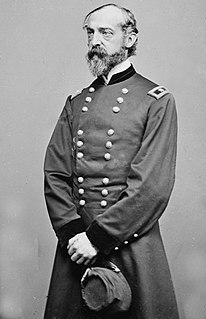
George Gordon Meade was a United States Army officer and civil engineer best known for decisively defeating Confederate General Robert E. Lee at the Battle of Gettysburg in the American Civil War. He previously fought with distinction in the Second Seminole War and the Mexican–American War. During the Civil War, he served as a Union general, rising from command of a brigade to that of the Army of the Potomac. Earlier in his career, he was an engineer and was involved in the coastal construction of several lighthouses.

The University of Pennsylvania Museum of Archaeology and Anthropology—commonly known as the Penn Museum—is an archaeology and anthropology museum associated with the University of Pennsylvania. It is located on Penn's campus in the University City neighborhood of Philadelphia, at the intersection of 33rd and South Streets. Housing over 1.3 million artifacts, the museum features one of the most comprehensive collections of middle and near-eastern art in the world.
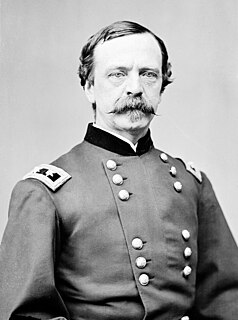
Daniel Edgar Sickles was an American politician, soldier, and diplomat.
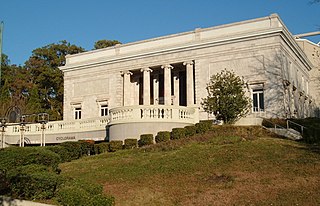
The Atlanta Cyclorama and Civil War Museum was a Civil War museum located in Atlanta, Georgia. Its most noted attraction was the Atlanta Cyclorama, a cylindrical panoramic painting of the Battle of Atlanta. As of December 2021, the Cyclorama is located at the Atlanta History Center, while the building is now Zoo Atlanta's Savanna Hall.
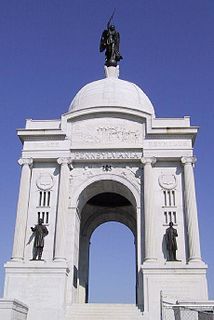
The National Civil War Museum, located at One Lincoln Circle at Reservoir Park in Harrisburg, Pennsylvania, is a permanent, nonprofit educational institution created to promote the preservation of material culture and sources of information that are directly relevant to the American Civil War of 1861–1865, and the aftermath period of the war as related to Civil War Veterans' service organizations, including the Grand Army of the Republic, United Confederate Veterans and the Daughters of the Confederacy to 1920. The museum also serves as the National Headquarters for the Sons of Union Veterans of the Civil War (SUVCW), the legal successor to the Grand Army of the Republic (GAR). In 2009, the museum became affiliated with the Smithsonian Institution in Washington, D.C.
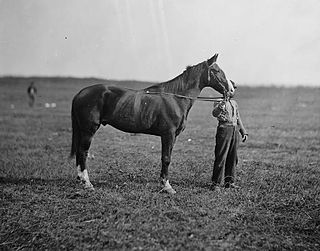
Old Baldy was the horse ridden by Union Major General George G. Meade at the Battle of Gettysburg and in many other important battles of the American Civil War.

The African American Museum in Philadelphia (AAMP) is notable as the first museum funded and built by a municipality to help preserve, interpret and exhibit the heritage of African Americans. Opened during the 1976 Bicentennial celebrations, the AAMP is located in historic Philadelphia on Arch Street, a few blocks away from the Liberty Bell.

Satterlee General Hospital was the largest Union Army hospital during the American Civil War. Operating from 1862 to 1865 in Philadelphia, Pennsylvania, its physicians and nurses rendered care to thousands of Union soldiers and Confederate prisoners. After its patient population spiked following the battles of Bull Run and Gettysburg, this hospital became the second-largest in the country with 34 wards and hundreds of tents containing 4,500 beds.

During the American Civil War, the Commonwealth of Pennsylvania played a critical role in the Union, providing a substantial supply of military personnel, equipment, and leadership to the Federal government. The state raised over 360,000 soldiers for the Federal armies. It served as a significant source of artillery guns, small arms, ammunition, armor for the new revolutionary style of ironclad types of gunboats for the rapidly expanding United States Navy, and food supplies. The Phoenixville Iron Company by itself produced well over 1,000 cannons, and the Frankford Arsenal was a major supply depot.
The Battle of Gettysburg, also known as the Gettysburg Cyclorama, is a cyclorama painting by the French artist Paul Philippoteaux depicting Pickett's Charge, the climactic Confederate attack on the Union forces during the Battle of Gettysburg on July 3, 1863.
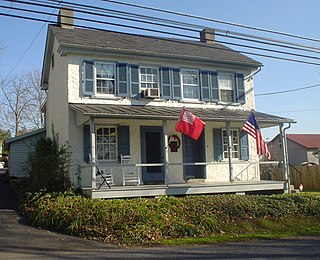
The Christian C. Sanderson Museum, or simply Sanderson Museum, is a museum of historical artifacts in Chadds Ford, Pennsylvania, United States. It is located in the Chadds Ford Historic District. The items in the museum were collected over many years by Christian C. Sanderson (1882–1966), a teacher, musician, poet, actor, writer, traveler, radio commentator and local historian. The Sanderson Museum was founded in 1967 by his friend and Brandywine artist Andrew Wyeth.
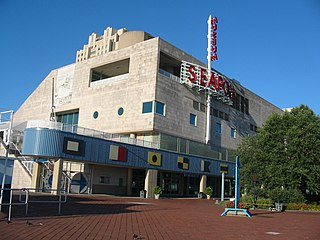
The Independence Seaport Museum was founded in 1961 and is located in the Penn's Landing complex along the Delaware River in Philadelphia, Pennsylvania. The collections at the Independence Seaport Museum document maritime history and culture along the Delaware River. At the museum are two National Historic Landmark ships and the J. Welles Henderson Archives and Library.
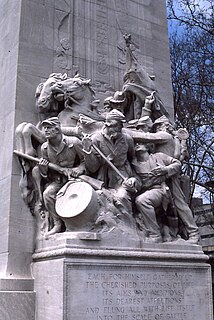
Philadelphia during the American Civil War was an important source of troops, money, weapons, medical care, and supplies for the Union.

George Gordon Meade Easby, also known as Meade or Mr. Easby, was a multi-talented person, from an artist to acting and producing films. He also served as an employee of the U.S. State Department for over twenty-five years and as a talk host on an AM radio station in Philadelphia, Pennsylvania. Easby was the great-grandson of General George Meade, victor of the 1863 Battle of Gettysburg against Robert E. Lee, and a descendant of seven signers of the U.S. Declaration of Independence. Easby's mother was a descendant of Nicholas Waln, who came to Philadelphia in 1682 aboard the ship Welcome with William Penn, and was later given the section of the city now known as Frankford.

The George Gordon Meade Memorial, also known as the Meade Memorial or Major General George Gordon Meade, is a public artwork in Washington, D.C. honoring George Meade, a career military officer from Pennsylvania who is best known for defeating General Robert E. Lee at the Battle of Gettysburg. The monument is sited on the 300 block of Pennsylvania Avenue NW in front of the E. Barrett Prettyman United States Courthouse. It was originally located at Union Square, but was removed and placed in storage for fourteen years before being installed at its current location. The statue was sculpted by Charles Grafly, an educator and founder of the National Sculpture Society, and was a gift from the state of Pennsylvania. Prominent attendees at the dedication ceremony in 1927 included President Calvin Coolidge, Governor John Stuchell Fisher, Secretary of the Treasury Andrew W. Mellon, and Senator Simeon D. Fess.

The Gettysburg National Museum was a Gettysburg Battlefield visitor attraction on the south border of the Gettysburg borough. Established by George D. Rosensteel after working at his uncle's 1888 Round Top Museum, the facility had an interpretive Battle of Gettysburg map using incandescent lights and was acquired by the National Park Service for use as the 1974–2008 Gettysburg National Military Park museum and visitor center after the Cyclorama Building at Gettysburg and before the Gettysburg Museum and Visitor Center.

Girard Avenue is a major commercial and residential street in Philadelphia, Pennsylvania. For most of its length it runs east–west, but at Frankford Avenue it makes a 135-degree turn north. Parts of the road are signed as U.S. Route 13 and U.S. Route 30.

Major General George Gordon Meade is an equestrian statue that stands in Philadelphia's Fairmount Park. The statue, which was unveiled in 1887, was designed by sculptor Alexander Milne Calder and honors George Meade, who had served as an officer in the Union Army during the American Civil War and was later a commissioner for the park. The statue is one of two statues of Meade at Fairmount, with the other one being a part of the Smith Memorial Arch.



















